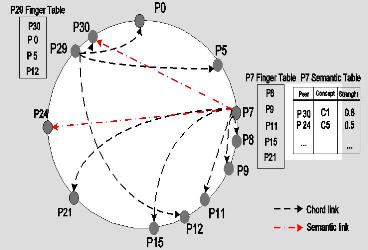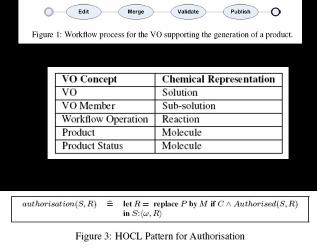Institute leader: Domenico Talia (talia deis.unical.it), University of Calabria deis.unical.it), University of Calabria
|  |
The overall objective of this Institute is to further the integration of data management and knowledge discovery with GRID technologies for providing knowledge-based GRID for the Semantic GRID and the Knowldege GRID. The institute provides a collaborative setting of European research teams working on: distributed storage management on GRIDs; development knowledge techniques and tools for supporting data intensive applications; and the integration of data and computation GRIDs with information and knowledge GRIDs. The goal is to strengthen the joint activity of research groups that today have sporadic and partial collaboration promoting larger leading teams and supporting efforts towards standard models and tools for data and knowledge management on GRIDs and P2P systems. This Institute has tasks in three main areas: - Distributed Data Management Providing infrastructures, techniques, and policies for managing storage resources in the GRID.
- Information and Knowledge Management Developing metadata, semantic representation, and protocols for GRID service discovery, information management and design of designing knowledge-oriented GRID services.
- Data Mining and Knowledge Discovery Design of GRID resource semantic mapping, database querying on GRIDs, and services and for distributed data mining and knowledge discovery on GRIDs.
Roadmap version 3 on Knowledge and Data Management
Publications related to the Institute on Knowledge and Data Management
|
|
| Research Group | Leader
| Participants
| | Grid Data Storage Access and Management Architecture | FORTH
| FORTH, PSNC, SZTAKI, UCY, INFN, UNL
| | Storage Security | INFN | INFN, FORTH, STFC
| | GRID Data Integration Models and Architectures | UoM | UNICAL, UoM
| Methods for Deriving GRID Trust and Security Policies for Managing VOs
| CETIC
| CETIC, STFC
| Distributed Data Mining in GRIDs and P2P Systems
| UNICAL
| UNICAL, ISTI-CNR, UCY, ICAR-CNR
| Adaptivity in Distributed Query and Workflow
| UNCL
| UoM, UNCL
| |
|
|
Latest Research Highlights |
ERGOT: Combining DHTs and SONs for Semantic-Based Service Discovery on the Grid
CoreGRID Technical Report TR-0177 [pdf]: The Grid has rapidly moved from a toolkit-centered approach, composed of a set of middleware tools, toward a more application-oriented Service Oriented Architecture in which resources are exposed as services. The soaring number of available services advocates distributed and semantic-based discovery architectures. Distribution promotes scalability and fault-tolerance whereas semantics is required to provide for meaningful descriptions of services and support their efficient retrieval. Current approaches exploit either Semantic Overlay Networks (SONs) or Distributed Hash Tables (DHTs) sweetened with some ”semantic sugar”. SONs enable semantic driven query answering but are less scalable than DHTs, which on their turn, feature efficient but semantic-free query answering based on ”exact” matching. This paper presents the ERGOT system combining DHTs and SONs to enable distributed and semantic based service discovery on the Grid. We argue that these two models can benefit from each other in the sense that SONs can be constructed by exploiting DHTs mechanisms thus enlightening the way to the semantics-free content publishing and retrieval mechanisms of the latter. In particular, ERGOT allows establishing semantic links among peers, and the SONs, by scrutinizing semantic service descriptions they advertise on the DHT. As we will show semantic links can also be viewed as semantic shortcuts on the DHT. Finally, ERGOT exploits an ad hoc semantic similarity metric to perform service matchmaking and numerically rank results. |  | Practical evaluation of custom technology-based vs commodity technology-based Storage Elements CoreGRID Technical Report TR-0168 [pdf]:
Scalable and cost-effective Storage Elements are essential components of Grid systems. An increasing number of data-intensive applications and services in Grids make the cost-effective scalability of capacity and performance of the storage infrastructure a very hot research topic. In this paper, we present the practical evaluation of the performance features of two classes of storage systems. We tested an example custom technology-based storage system, the FC-SATA disk matrix and a commodity-based storage solution, the Violin system, developed at FORTH. Using a block-level benchmark, we examined the performance limits and the scalability features of both classes of systems.
| 
| Developing Secure Chemical Programs with Aspects
CoreGRID Technical Report TR-0166 [pdf]: This paper studies security engineering of distributed systems when following the chemical-programming paradigm, represented here by the High-Order Chemical Language (HOCL). We have analysed how to model secure systems using HOCL. Emphasis is on modularity, hence we advocate for the use of aspect-oriented techniques, where security is seen as a cross-cutting concern impacting the whole system. We show how HOCL can be used to model Virtua Organisations (VOs), exemplified by a VO system for the generation of digital products. We also develop security patterns for HOCL, including patterns for security properties such as authorisation, integrity and secure logs. The patterns are applied to HOCL programs following an aspectoriented approach, where aspects are modelled as transformation functions that add to a program a cross-cutting concern. |  |
|
|
|
|
 Institutes
Institutes  Institute on KDM
Institute on KDM